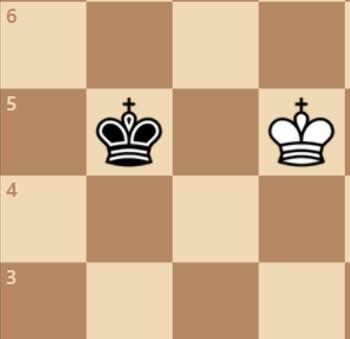
Winning with "Lateral" Opposition
Maintaining opposition with the enemy king is often a critical tactic in endgames with only kings and pawns remaining as pieces. I was recently surprised how important it was in a recent online five-minute blitz game when both my opponent and I were each trying to advance a passed pawn for promotion on the last rank.
Only pawns and kings were remaining on the board after 43 moves. The following diagram shows the position of each player.
Playing White, I quickly decided that my next move was forced: Kd5. This move placed my king on the same row as the Black king and in “opposition” to this piece (a position that would help to determine the outcome of the game), although opposition -- and specifically direct opposition -- typically means a position where kings are on the same file and separated by one square.
Each side then began advancing its passed pawn. Fortunately, my pawn could be promoted on my 47th move ahead of Black’s pawn promotion, which followed immediately, and I had valuable tempo. After 47 moves, the following diagram shows the board position.
When my now-promoted queen checks the Black king with Qb8+, my king’s opposition with him forces this piece to the a-file. Moving my queen now the a-file and placing Black in check again convinced Black to resign because I would easily capture his queen on my next move after his king moves off the a-file.
The win was achievable because my king limited the movement of Black’s king. Opposition is an important tactic, and in this game “lateral” opposition forced a favorable outcome.
